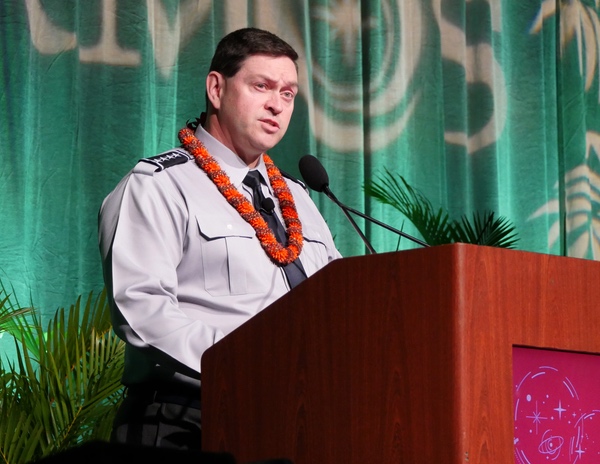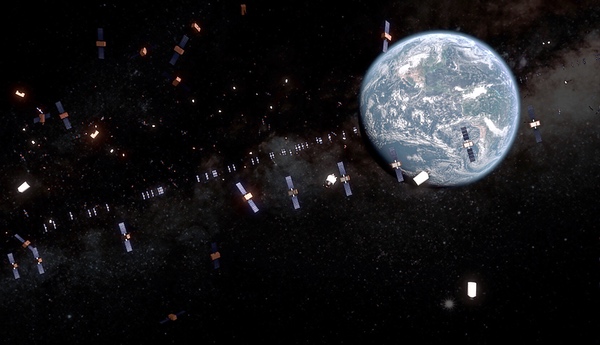Getting a new civil space traffic management system on trackby Jeff Foust
|
| “What we’ve planned is a very slow change from the commercial industry receiving data from the DOD over to TraCSS in a way that does not disturb current operations and allows everyone to get comfortable,” Magnus said. |
The policy, though, offered few specifics about how to make that transition, nor did it provide a schedule for doing so or necessary resources. It thus should be little surprise that progress on that goal has been slow, and today the Defense Department still issues a growing number of conjunction warnings to satellite operators as the number of satellites, and the amount of debris, in Earth orbit rises.
“That policy was like a canary in a coal mine,” said Diane Howard, director of commercial space policy for the National Space Council, in a talk last month at the AMOS Conference, an event in Hawaii devoted to STM and related topics. “It made the case for the importance for funding when implementing policy, no matter how strong and how timely that policy is.”
But after years of slow progress, there are signs that shift in STM responsibilities is gaining momentum. With policy questions—including whether the Commerce Department was the right agency the mission—sorted out and an increase in funding, the Office of Space Commerce is making progress on setting up a system that will take space situational awareness data in from the Defense Department, as well as commercial and international sources, and use it to warn satellite operators of potential collisions.
That system, described in Space Policy Directive 3 as an open architecture data repository, is now known as the Traffic Coordination System for Space, or TraCSS, pronounced “tracks.” The Office of Space Commerce says it is making steady progress in building up TraCSS, even though it is still a year away from offering initial services.
In a video presentation in July, Sandy Magnus, chief engineer of TraCSS at the office and a former NASA astronaut, described TraCSS as having three main elements. One, called OASIS, will be the repository that stores space situational awareness data from various sources. A second, SKYLINE, will provide services based on the data in OASIS, like conjunction warnings. The third element, HORIZON, will be what Magnus called a “sandbox” led by NASA to test new STM technologies and services.
She described a “crawl, walk, run” approach to setting up TraCSS. “What we’ve planned is a very slow change from the commercial industry receiving data from the DOD over to TraCSS in a way that does not disturb current operations and allows everyone to get comfortable,” she said in the presentation.
That starts with a Phase 1.0 scheduled to be ready in September 2024 that will largely duplicate what the Defense Department currently offers, with the exception that TraCSS will scan for conjunctions every four hours, twice the frequency of the current DOD approach. The system will also incorporate satellite position data provided directly by satellite operators, which is intended to enhance the accuracy of conjunction notifications.
A Phase 1.1 will follow with the inevitable bug fixes. Later phases will follow on a quarterly basis to add more capabilities, like data integrity monitoring and a mission planning function to request additional data for potential conjunctions of concern. Magnus said the goal is to roll out a Phase 1.4 by September 2025 that would create a public interface for TraCSS and hand over conjunction analysis to a commercial provider.
A later Phase 2 would incorporate launch collision avoidance, or COLA, warnings, and a Phase 3 for tracking reentries. Magnus did not provide a schedule in that presentation for those later two phases, which she said will require coordination with the FAA and DOD.
In a panel discussion at AMOS last month, Richard DalBello, director of the Office of Space Commerce, said he was “tremendously excited” about the progress his office was finally able to make on its civil STM responsibilities since he took the job in May 2022. “When I started,” he said, “there was almost no staff. You obviously can’t build a program if you don’t have staff.”
The office is on pace to have a staff of about 50 by next year, he said. It is also in the process of setting up two TraCSS operations centers, a primary center and a backup, whose locations have yet to be determined.
That progress, he said, is enabled by funding that finally came through just in fiscal year 2023. The office received $70 million in 2023 compared to just $16 million in 2022, with most of the new funding going to work like TraCSS. The office requested $88 million for fiscal year 2024.
“We didn’t get our first budget until January,” he said, after the passage of a final 2023 spending bill. “We have made good use of that budget since.”
| “When I started,” DalBello said, “there was almost no staff. You obviously can’t build a program if you don’t have staff.” |
That includes, he argued, spending money on commercial capabilities rather than just government ones. He said after the panel that his office anticipates spending $17 million in 2024 on commercial infrastructure, like cloud computing services, and $41 million on commercial space situational awareness data and services.
A key element, though, of TraCSS will remain government data and other capabilities from DOD and NASA. “We could not be where we are without both DOD and NASA,” he said, with DOD continuing to provide data and NASA managing the HORIZON service.
DOD officials, who have long discussed their desire to hand over civil space traffic management responsibilities to the Commerce Department, say they’re working to support that transition so they can focus on defense responsibilities.
“The US military will be focused on threats. DOC will be focused on hazards,” said Barbara Golf, strategic advisor for space domain awareness with the US Space Force, on the conference panel. “They will be handling everything that is cooperative, everything that is what we call ‘non-cooperative’; it can’t help. The DOD will focus on everything that is actively uncooperative.”
As part of the transition effort, she said the Defense Department would provide the Office of Space Commerce with better space situational awareness data than what it currently provides publicly through the Space-Track service.
“We are working to get the high-accuracy catalog released to the DOC, machine to machine, starting in the spring of next year, every four hours indefinitely,” she said. “They will have everything they need in order to be seeded for spaceflight safety. They can then augment with commercial data.”
She suggested that move was driven by the growth in the quality of commercial data, which is not classified. “It does not matter that the DOD wishes it were,” she said. “We're over it.” The prompted a round of applause from attendees.
 Chief of Space Operations Gen. Chance Saltzman said the Space Force was willing to wait if it takes the Commerce Department longer than expected to set up its space traffic management system. (credit: J. Foust) |
There are still challenges ahead for TraCSS. Some of those challenges involve commercial data and services. As part of Space Policy Directive 3, the Commerce Department is instructed to offer a free basic service, while allowing industry to sell advanced services. The approach is intended to be analogous to weather forecasting, where the National Weather Service offers a free forecast that is sufficient for the general public, but with companies offering more advanced commercial weather forecasting for industries from agriculture to aviation with specific requirements.
The Office of Space Commerce has outlined what it considers basic services that would be included in TraCSS, which include conjunction warnings and launch COLA screenings, among related features, versus those capabilities it considers advanced and would not be included in TraCSS, like spacecraft maneuver and object breakup detection. It sought feedback on those plans from industry in a request for information early this year.
| “They’ve got money. They’re investing the money in the things that they should be,” Gen. Saltzman said of the Commerce Department's STM effort. |
The responses showed some—perhaps predictable—divergence in opinions between providers of commercial space situational awareness services and spacecraft operators, who would be both users of TraCSS and customers of those commercial space situational awareness providers. Satellite operators wanted to put more of the proposed advanced capabilities into the basic TraCSS service while commercial space situational awareness providers questioned whether some of the proposed basic TraCSS services were instead advanced.
Another question is the schedule for setting up TraCSS. While the Office of Space Commerce says it expects to have that initial Phase 1.0 version ready by next September, some foresee that schedule slipping.
That includes Gen. Chance Saltzman, chief of space operations for the Space Force. In a media briefing after a speech he gave at the AMOS conference, he suggested he doubted the Office of Space Commerce could adhere to that schedule, without elaborating.
“We’ve got this covered. It’ll be about when they’re ready to take this on because it’s important,” he said. “I just know how tough it is, and mostly we’re going to have to continue to do it anyway for our own purposes.”
Saltzman added, though, that he was pleased with the focus the Commerce Department was putting on the task, based on conversations with Secretary of Commerce Gina Raimondo. “She talked very knowledgeably about it, which is very encouraging. That means it’s on her radar,” he said. “They’ve got money. They’re investing the money in the things that they should be.”
That’s a big improvement from just a couple years ago, when the Commerce Department lacked funding, raising questions about whether it could ever take on civil STM. “A mere two and a half years ago, SPD-3-related acquisitions looked like an insurmountable challenge,” said the National Space Council’s Howard. “I think some of those early days of SPD-3 being an unfunded mandate forced a lot of those early conversations about how to make that transition, to be more creative.”
Note: we are using a new commenting system, which may require you to create a new account.
